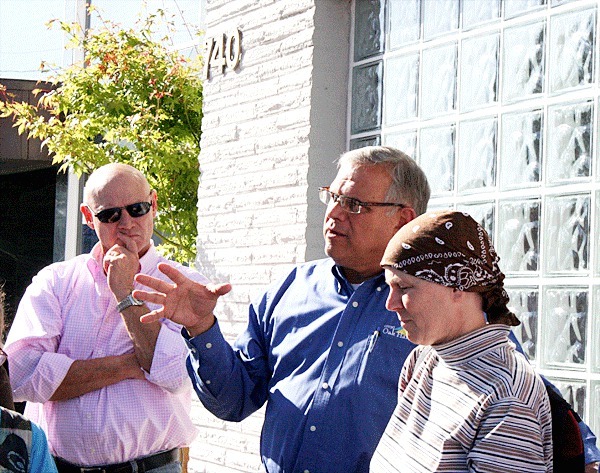Ask people what kinds of businesses and folks reside in Oak Harbor, and depending on their religion, politics and passions, the answers will range from the extremely complimentary to the downright offensive. But one island group is working to revamp the city’s image so that no matter what the situation, one point cannot be argued: Organizations and citizens of Oak Harbor promote sustainability.
The Sustainable Whidbey Coalition was formed in November 2007 when city leaders and citizens banded together to discuss how to mitigate the effects of climate change and give back to the environment. Nearly three years later, the coalition is off the ground and has turned into a network of public and private entities that support each other in fostering sustainable practices.
At a meeting in September, Oak Harbor Mayor Jim Slowik proudly announced some of the island’s and coalition’s recent eco-friendly accomplishments, which numbered about 110.
Some noted items were: Environmental educator Maribeth Crandell partnered with the Beachwatchers and taught students about water quality programs and received help stenciling more than 400 catch basins; the City Marina received “clean marina” certification and is one of 30 to do so statewide; newly installed worm bins have reduced garbage weight by 25 percent at the Public Works shops; and more than 12,000 compact fluorescent bulbs were distributed to residents which lowered the city’s carbon footprint by about 4 million pounds.
“All of those things aren’t hard,” Slowik said of the green principles. “They’re small things that any one of your organizations can adopt. You may not be able to adopt all of them, but you can adopt some. All of them work together.”
Eric Johnston, Oak Harbor’s city engineer and coalition member, explained how he plans to make the Pioneer Way road project sustainable.
The project was accepted into one of the University of Washington’s research programs known as The Greenroads. The Greenroads is essentially a sustainability rating system or metric for streets. It awards points for sustainable practices and has 11 mandatory requirements and additional voluntary credits the road project can earn.
To prepare, Johnston has created a checklist of eco-friendly tactics. Some items on it include plans to use warm mix asphalt which emits fewer harmful emissions, to use low-maintenance products like road stripes that last four to five years rather than one, to create a drip irrigation system for plants eliminating watering trucks and to build wider sidewalks for pedestrians and bicyclists.
“Because it’s one of the first green streets, I think it could be a tourist attraction for the city,” Johnston said. “The university will use Oak Harbor as a test case to say, ‘Look, Oak Harbor did this, they did it well, and they made it work,’ so it will get us some recognition.”
Coalition member Kelly Keilwitz, owner of Whidbey Sun & Wind in Coupeville, was happy to hear Johnston talk about the green developments and was excited by the prospect of incorporating more of them into his own work.
“Thanks for being a pioneer on Pioneer Way,” he said.
Information about the Sustainable Whidbey Coalition and how to get an organization involved can be found at www.sustainablewhidbey.org, which will launch later this fall.



